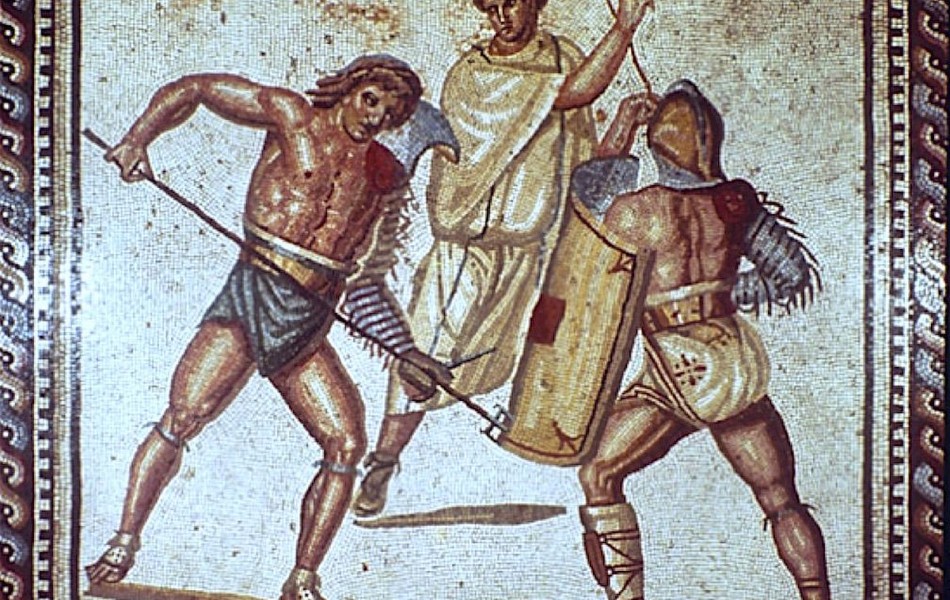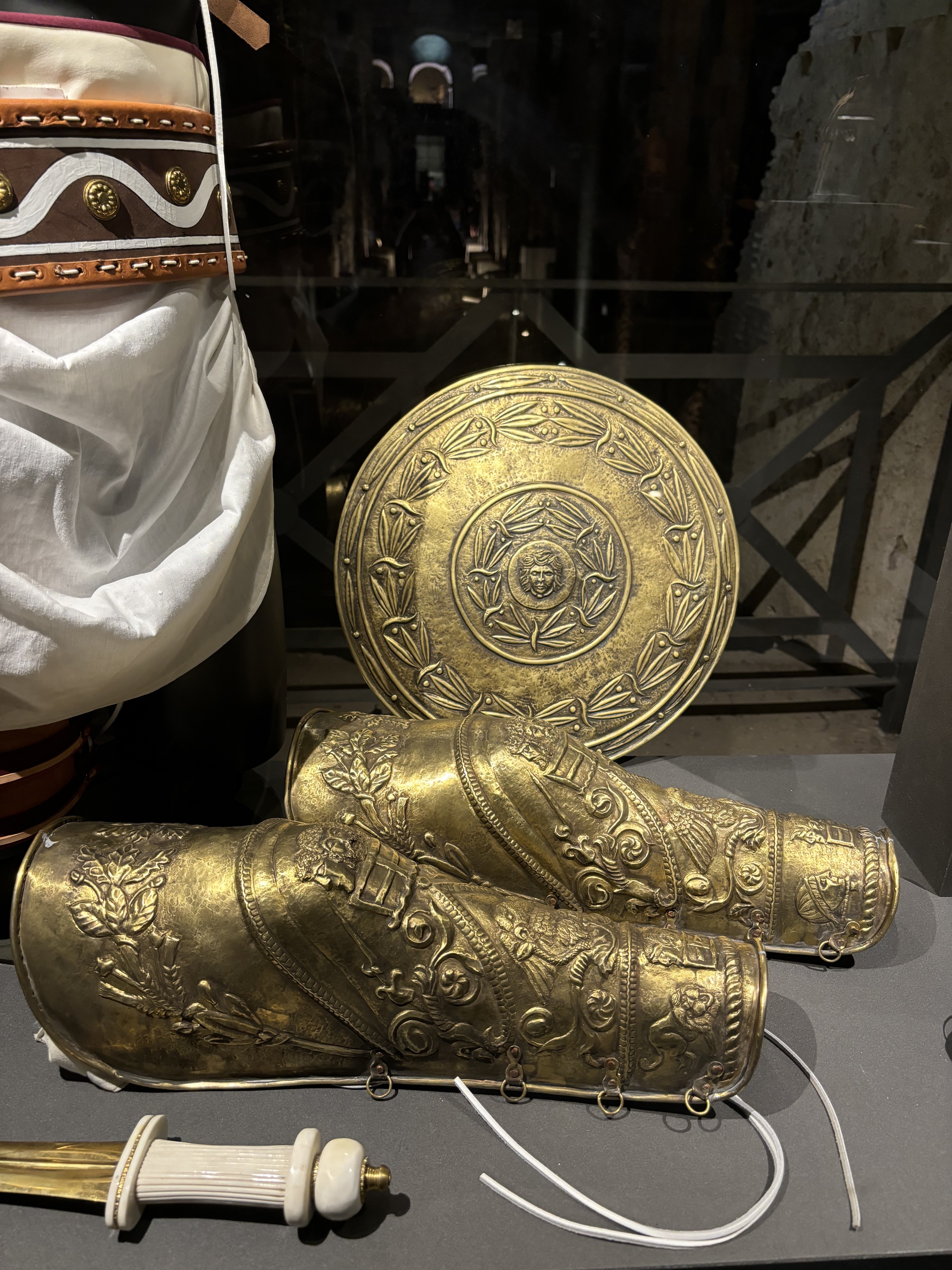Who were Gladiators of Ancient Rome: where they fought and how
Learn about who the gladiators of Rome really were: the weapons, Colosseum, arenas and often forgotten rules of their fights

30 January 2025
Rome Travel GuideIn the 1st century A.D. Rome was the heart of the known world, a heart also made of blood
The sharp sounds of screeching swords, the air laden with blood, the point of the sword stealing thousands of glances and a victory with the highest price: the life of a man, of a gladiator. We are used to seeing in films in TV series gladiators at their most spectacular, in the sand and marble of the Colosseum, in the most extreme version of the match, the one to the death. But was it really like that? Was it a hopeless meat grinder? Things were not exactly like that, not always at least. If you want to better discover the places where gladiators fought Ancient Rome, reliving its history, don't miss our Colosseum Guided Audio Tour!
Where did gladiators fight in Ancient Rome?
Let us start with the location of these fights. Historical sources tell us that gladiatorial games existed in Rome at least as early as the 3rd century BC, but the Colosseum was not built until 350 years later, in the 1st century AD. So, until the construction of the Flavian Amphitheatre, this was the original name of the Colosseum, where did they take place? Initially in Rome the gladiatorial games were held in the centre, near the short side of the Circus Maximus, not the one where the FAO is today, the other side with the Bocca della Verità: there was the Foro Boario, the cattle market of Ancient Rome, and where the first gladiatorial shows were also organised. Therefore, for several centuries gladiators fought without the Colosseum, and only when the latter architectural marvel was built in the 1st century AD by Emperor Vespasian did the gladiatorial games finally find their sacred place.
Who were gladiators in Ancient Rome?
Gladiators were divided into many categories, with different armaments both in terms of weapons and defence, but generalising we can divide them into two main categories that also coincided with their two large groups of fans: the scutari and the parmulari. The scutari are those gladiators who fight with a large shield, called scutum; while the parmulari are those gladiators who have a small shield, called parmula. They belong to the scutum gladiators like the secutor and the murmillo. The armament of the murmillo is somewhat reminiscent of a legionnaire, a Roman soldier par excellence: he fought with a large rectangular shield, a gladius, as the Roman sword is called, and a large helmet.
To the parmularians belonged gladiators such as the hoplomacus, who fought with a small shield and a lance, which allowed him greater agility against powerful but slow enemies. Thracians also belonged to the Parmularians, protected by a rectangular shield, leg shields reaching above the knee and a well-decorated helmet. An example of a very famous Thracian is Spartacus, the rebel slave who led to a civil war in the 1st century B.C. and inspired many films. A curiosity about the Thracian is his sword: he is armed with a curved sword called a sica, useful for striking an opponent from behind. From the name of this sword comes the term ‘hitman’, he who strikes his victims from behind.
The invention of these categories of gladiators was useful to ensure the most balanced encounter possible: in the heavy murmillo strength must carry the weight of slowness, in the agile hoplomacus vulnerability is minimised by speed.

How many gladiators died in ancient Rome?
To answer this, try to imagine buying a slave and supporting him financially with training, food and everything else. Now imagine if after two bouts he were to die: it would be a huge waste of energy, time and resources to train and train a new gladiator who who who knows how he will perform in the next bout.
To give a practical example, at Pompeii of the 32 bouts witnessed in the arena, only three ended in tragedy. As a general proportion therefore, the ratio between mortal and non-fatal matches is 1:10. This is also the reason why some gladiators in Ancient Rome became real stars, if you want to know more check out our article on the History of the Roman Gladiators.
A gladiatorial combat goes like this: after checking weapons, the gladiators in the arena would announce that their fight would be to the first, or to the last blood. To the last blood means that the first who would die would lose; to the first blood means that the first who would be wounded by the other would lose. In the case of combat to the last blood, the gladiator on the ground would be joined by some ‘attendants’, who would use a red-hot iron to make sure that the fighter was not unconscious or seriously injured, in fact in this way he would wake up to the red-hot contact and if he did not accept death he would be killed with a sort of hammer with a spike.
The gladiators' games rules in Ancient Rome

Let us start with the main point: when the gladiators entered the arena, they could not do as they pleased. Meanwhile, as we have already mentioned above, the categories of gladiators ensured that the encounter was balanced, so upon entering the arena the manner of the fight was declared. Then, during the fight, there was a referee or two armed with a stick, who not only gave a sense of order and seriousness to the encounter in the eyes of the Romans, but also checked that no unfair blows were made or assessed whether the match could continue or not because of injuries or the breaking of an important part of the weaponry. The exact rules of the bouts are unclear, but certainly the matches were strictly codified.
About the ending of the match then, we are used to it badly. Famous are the Hollywood images of emperors raising their thumbs to save a gladiator, or lowering them to decree his death, but in reality things were different. To save a gladiator one had to do the so-called pollex pressus, i.e. the thumb clenched in the hand; otherwise, if the gladiator did not deserve to be saved, one would resort to the pollex versus, i.e. with the thumb horizontal to the hand.
Our categories:
You may also be interested ...

Vatican Private Tour with Sistine Chapel & St. Peter's Basilica: Renaissance’s Wonders
Private tour
Discover with a skip the line Private Vatican Tour the Sistine Chapel, Vatican Museums and St Peter’s Basilica
starting from: € 375

Colosseum Guided Audio Tour with Roman Forum and Palatine Hill
Private tour
Discover Ancient Rome’s secrets and history with our immersive Colosseum guided audio tour, rich in image and content
starting from: € 51 € 42